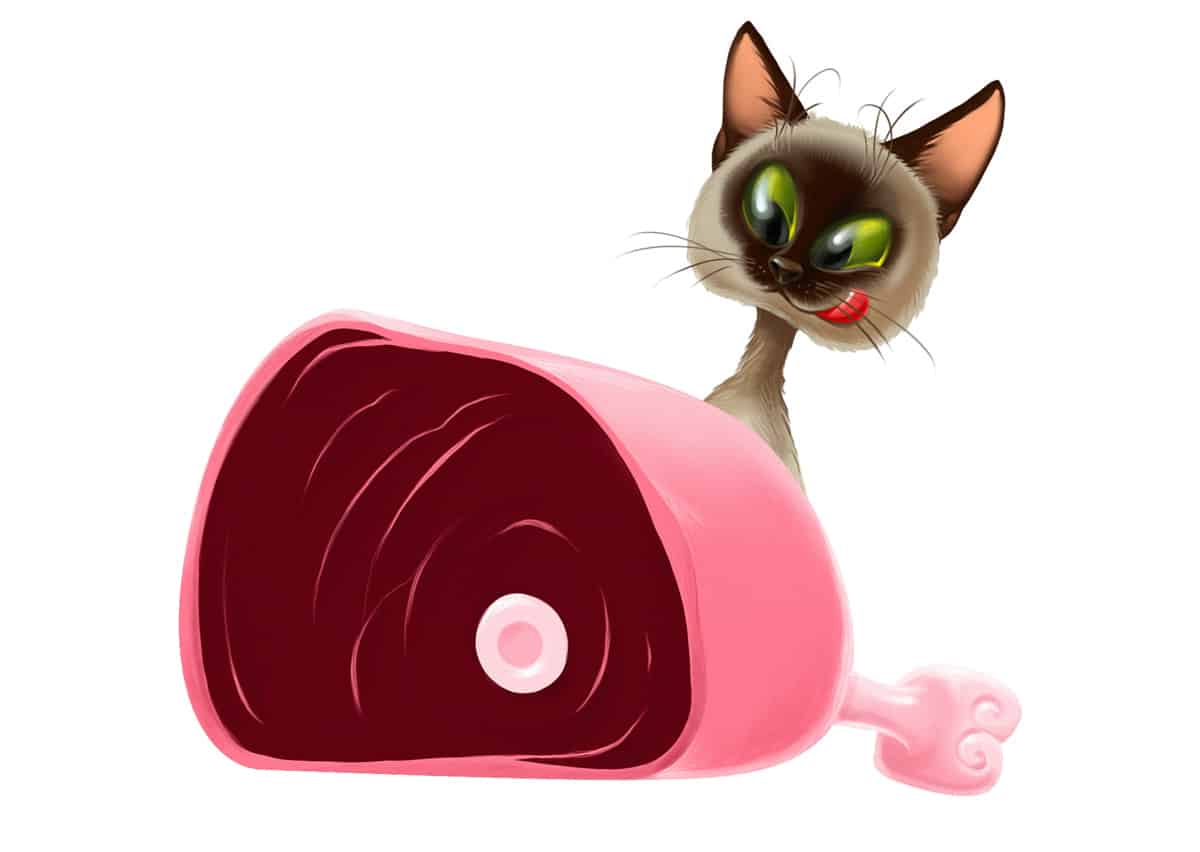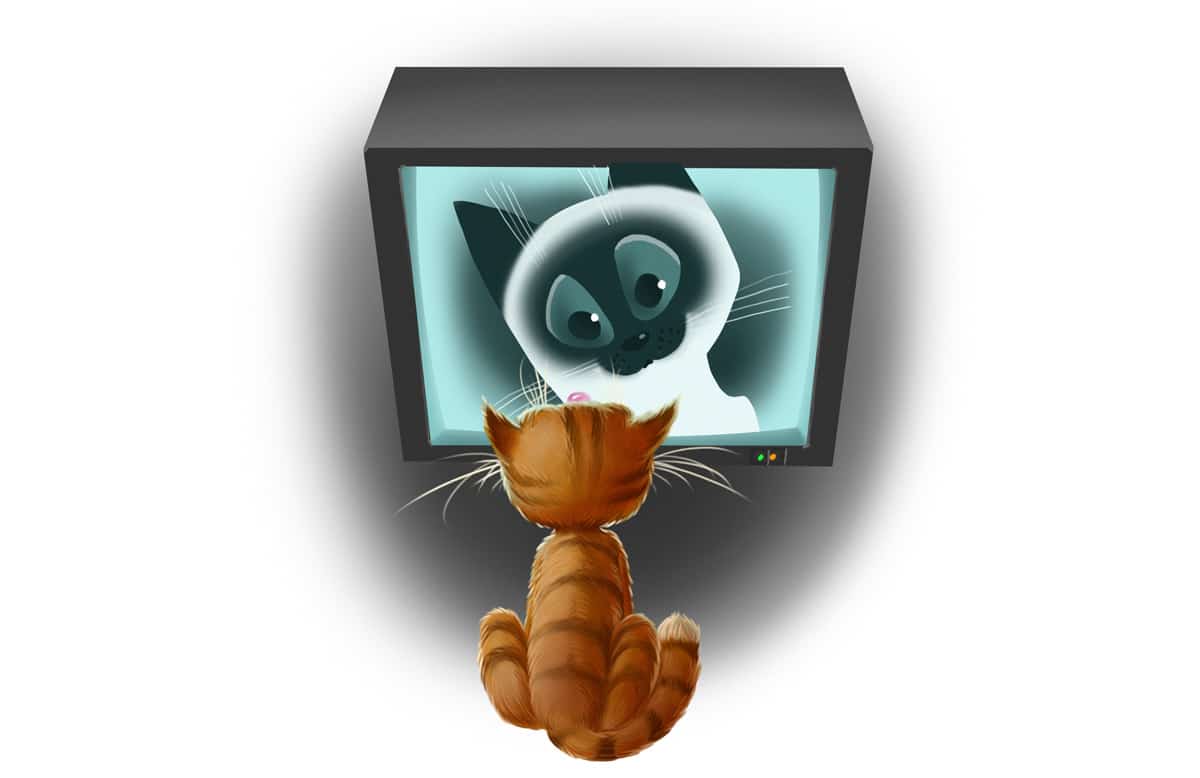
Did you know that there’s actually an “obesity epidemic” that rarely gets reported on? It sounds pretty bizarre, considering how much newspaper space and television airtime we devote to increasingly panicked reports every time new numbers come out or there’s a new study to discuss. But despite the incredible media frenzy every time there’s the tiniest bit of news about human obesity, there’s a parallel rise in animal obesity that most people rarely hear about, in pets, in lab animals, and in wild animals. Since we can’t explain that in terms of willpower, it really shines a spotlight on environmental factors like endocrine-disrupting chemicals.
It’s Not About Willpower or Laziness
Statistically, this review reports that 34-59% of dogs and 25-63% of cats are overweight or obese – that looks a lot like the human numbers. It’s tempting to explain cat and dog obesity in terms of lazy or irresponsible owners who feed their pets too many treats and don’t take them for walks enough. But that explanation falls apart when you realize that it’s not just pets.
This review goes over the evidence that all kinds of animals have been getting fatter. Laboratory animals like rats and mice have been gradually gaining weight on average, and they eat tightly-controlled diets of completely standardized chow – mice in labs aren’t being spoiled by researchers who just can’t resist them begging for treats.
Pasture-fed horses have also been gaining weight eating the same kind of pasture. The review even found that feral rats in Baltimore have been steadily gaining weight, and they very definitely aren’t being pampered by irresponsible owners.
In some cases, there probably is a human aspect – nobody’s trying to deny that pet owners have a role in pet obesity. But the statistics about lab and feral animals force us to look for explanations of obesity beyond “willpower” or “laziness.” The lack of willpower is a constant for animals, and everyone realizes that it’s incredibly dumb to try to cultivate willpower in dogs or cats or lab mice. But even though animals have never had willpower, they haven’t had weight problems until recently.
What Causes Animal Obesity?
It’s very obviously nothing to do with “willpower” on the part of the animals. So what is it? Owners play a role for pets, but that doesn’t explain weight gain among wild and lab animals. There are a couple interesting theories. One that you’ve probably heard of is endocrine-disrupting chemicals. Another is fairly new: changes in protein, carb, and fat content of foods caused by global warming. Here’s a look.
Owner-Related Factors

With pets, one huge factor in obesity is obviously owner behavior. Unlike obese humans, obese pets have relatively little control over what food is available to them. Unsurprisingly, getting fed table scraps or frequent treats is strongly associated with obesity.
But don’t be tempted to just shift explanations about “willpower” from dogs to the humans that feed them. Remember that all kinds of animals are getting fatter on average – it’s not just pets. If lab mice on controlled diets and feral gutter rats are gaining weight, the problem probably isn’t irresponsible owners who feed them too many treats.
That forces us to look at other environmental explanations: what affects all these different animals that could explain rising rates of obesity?
Environmental Endocrine Disruptors
One possible explanation is the rate of endocrine-disrupting chemicals in the environment. Endocrine disruptors are chemicals like BPA, DDT, and phthalates (not to mention a bunch of others) that mimic the effects of estrogen in the body. These chemicals can get into the water and food supply from all kinds of places – pollution from factories, leaching out of plastic containers, and cleaning chemicals, to name a few. These are "new" chemicals in that they weren't around in our evolutionary environment. They’re almost impossible to avoid and they have a documented effect on obesity in animals and in humans.
The most recent Endocrine Society statement on EDCs explains how endocrine-disrupting chemicals can act as “obesogens” in both humans and animals: they promote the growth of fat cells and change energy balance to make weight gain easier.
Endocrine disruptors affect every animal that needs air and water to live (so, all of us). Willpower has nothing to do with it: if you drink water, you’re almost certainly exposed. It’s one potential explanation for obesity that could cover humans, cats, dogs, lab animals, and wild animals.
The Protein Leverage Hypothesis
This study offers another explanation that might not be as familiar as endocrine disruptors: the protein leverage hypothesis. Basically, the protein leverage hypothesis goes like this:
- Humans and other animals have a set point for protein intake. If our food is lower in protein, our bodies will drive us to eat more food and thus get fatter. This has been studied in humans, cats, dogs, and other animals.
- In humans, recent environmental changes (e.g. grain subsidies that make carbs cheap and protein expensive) have driven a lower-protein diet, which contributes to obesity.
- Rising levels of carbon dioxide caused by global warming have actually reduced the protein content of plant foods and increased their carbohydrate content, and may be responsible for other nutritional changes. This could be driving humans who eat the plants to be hungrier and eat more.
- The biological changes to plant foods might also account for changes in the nutritional content of pet food and the plants that wild animals eat. For example, the review cites evidence that locusts get fatter eating plants with a higher carb:protein ratio.
Basically the short version is that global warming might be driving weight gain in every living thing that eats plants, or in other words, all of us. Again, nothing to do with willpower, and unless you can stop global warming single-handedly, there’s not much you can really do to protect yourself from the effects.
Summing it Up
Animal obesity really highlights the role of environmental factors in weight gain. We might be able to blame obese pets on lazy or irresponsible humans, but it’s hard to blame weight gain in lab mice and gutter rats on people who just can’t stop feeding them treats and table scraps.
This is the full range of the “obesity epidemic:” it’s not just about humans, and looking only at humans makes us miss a lot of big-picture environmental factors because we’re too busy blaming people for being lazy and gluttonous.
Exposure to environmental estrogens or foods affected by increased carbon dioxide levels has nothing to do with “willpower,” and it’s impossible to avoid these problems by making better personal choices. From a Paleo perspective, these problems are just as evolutionarily strange as modern foods. Just like refined white flour, BPA and other endocrine disrupting chemicals are problems our bodies just don't know what to do with this. Just like foods bred for sweetness over nutritional content, foods with different protein and carb contents thanks to global warming are products of the modern food environment, and not something our bodies know what to do with it.
Looking at the environmental factors in animal obesity really just highlights how much we need to stop trying to enforce individual behavior as a complete solution, and start looking at the big social and political picture behind the environmental factors that make everyone more vulnerable to weight gain.





Leave a Reply